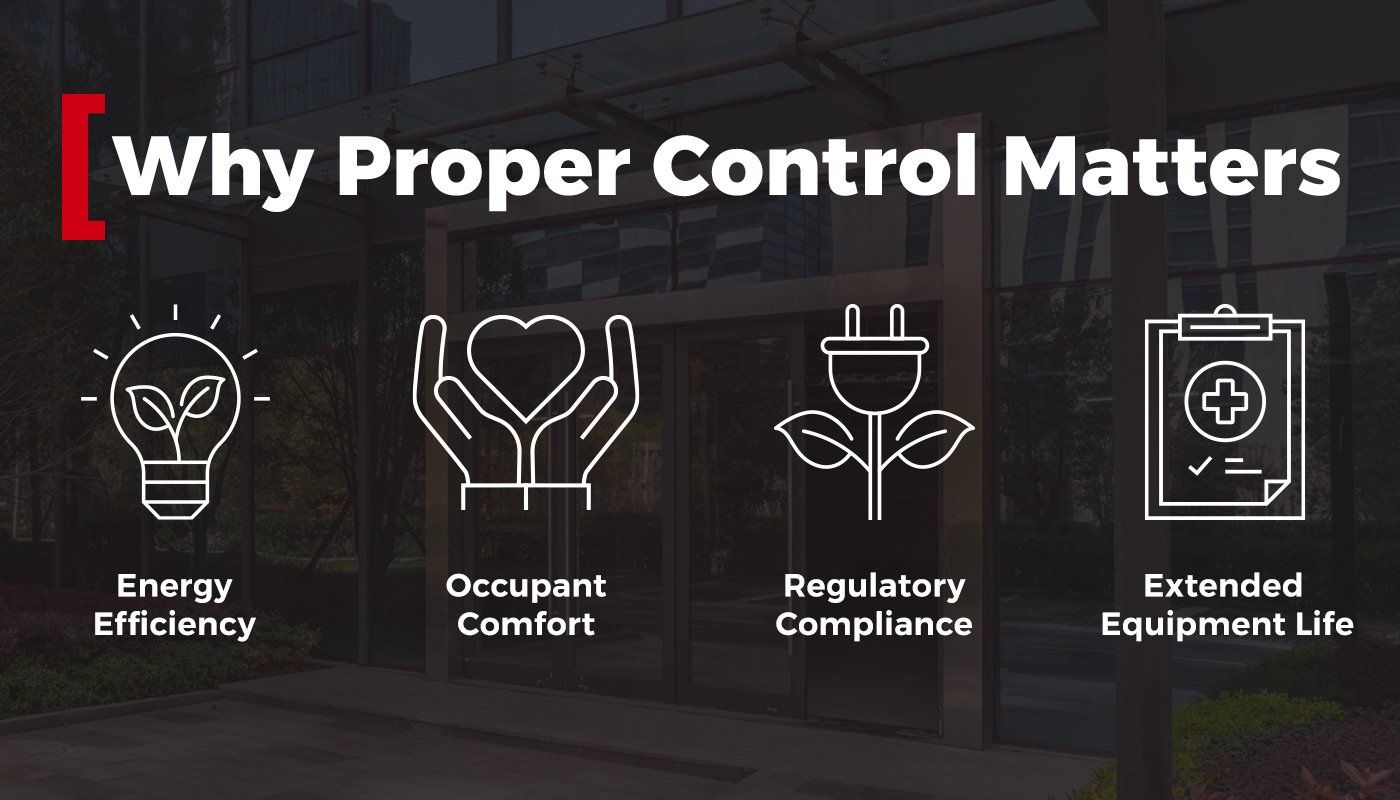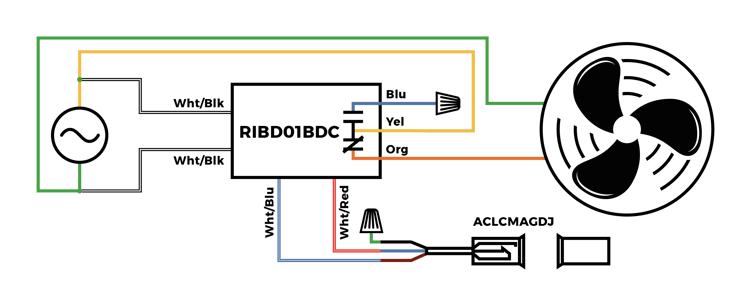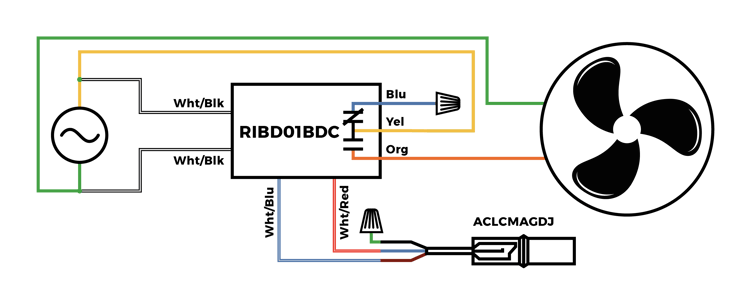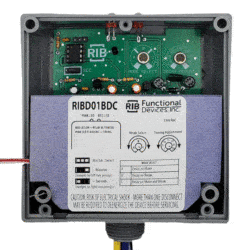
Have you ever walked through an automatic sliding door and got blasted by air as you crossed the threshold? If so, you have walked through an air curtain. An air curtain is a large fan mounted above an opening. It blows a stream of air down to separate two environmental spaces while still allowing for passage and sight through the opening.
While the concept of an air curtain is simple, its performance depends heavily on its control system. Without proper methods, an air curtain can waste energy, reduce comfort, or even shorten its own service life. In this blog, we’ll explore why control matters, review common control methods, and highlight specific Functional Devices’ products that will get the job done well.
Here at Functional Devices, you could say we’re obsessed with a job well done. Our engineers work meticulously to design relays, sensors, and other electrical components of the highest caliber. We even test each device (not just batch test) before it leaves our facility. If you want to install an air curtain, give us a call for help implementing the best products for your application.
Functions of Air Curtains
By producing a steady stream of directed airflow, air curtains reduce the exchange of conditioned and unconditioned air. They are common in retail spaces, warehouses, restaurants, and healthcare facilities where doors are frequently opened and closed.
Air curtains provide several useful functions:
- Keeping unconditioned outdoor air from entering a conditioned space
- Blocking drafts
- Keeping dust and debris from entering a space
- Preventing fumes from traversing the opening
- Preventing insects from flying into a building
All these functions can translate into benefits when the air curtain is properly installed and controlled.

Air curtains can only live up to their true potential, however, if they are properly operated. The effectiveness of an air curtain is not only about how powerful the fan is, but also when and how it turns on. Proper control ensures that the device only runs when needed, providing key benefits such as:
- Energy Efficiency. Prevents unnecessary run time and reduces HVAC loads by operating only when a door is open.
- Occupant Comfort. Minimizes drafts and maintains stable indoor temperatures.
- Regulatory Compliance. Some facilities require controlled air barriers to meet energy codes or health standards.
- Extended Equipment Life. Reduces wear and tear by avoiding constant or unnecessary operation.
When paired with the right controls, an air curtain becomes a reliable and cost-effective tool for improving building performance.
Common Control Methods for Air Curtains
Now let’s explore some ways to control air curtains and what we recommend. There are three main options for operating an air curtain: manually, by door activation, and by time delay.
Manual Control
The simplest method for controlling an air curtain is by a wall switch or push button that allows staff to turn the air curtain on and off as needed. While inexpensive, this method relies on human action, which can lead to wasted energy if the curtain is left running unnecessarily or reduced effectiveness if it is forgotten altogether.
Door-Activated Switches
The next option for operating an air curtain is by micro-switches or magnetic door contacts that automatically turn on the air curtain when the door opens and shut it off when the door closes. This demand/response system ensures operation is tied directly to use, improving efficiency and reliability.
Time Delay Relays
Finally, time delay relays give you the best of both worlds: responsive activation and nuanced performance. A time delay relay allows the air curtain to keep running for a short period after the door has closed, ensuring that the invisible air barrier remains effective during high-traffic or rapid door cycling (short cycling).
Imagine a store opening and a line of people entering in quick (but not continuous) succession. It wouldn’t make sense for the air curtain to keep turning on and off with the door. This control method balances energy savings with performance, preventing frequent on/off cycling that could wear out the equipment.
How Functional Devices’ Products Control an Air Curtain
It won’t come as a surprise that we recommend using products where a time delay can be added! This can be done with our time delay dry contact relay, RIBD01BDC, and one of our magnetic switches like ACLCMAGDJ.
The first diagram shows the "door" open and fan on.

With the door open, the ACLCMAGDJ's magnet is away from the switch body, so the internal reed switch will be in its "normal" state, which means the Normally Closed (N/C) contact between the Blue and Brown wires will close. The closed contact connects the Dry Contact Input wires (Wht/Blu and Wht/Red) of the RIBD01BDC. When this happens, the Normally Open (N/O) contact of the RIBD01BDC closes, and the air curtain, represented by the fan, turns on.
The next diagram shows the door closed.

When the door closes, the ACLCMAGDJ will have its magnet acting on the internal reed switch, this will open the switch, which opens the Dry Contact Input of the delay relay, RIBD01BDC. After that happens, the timer in the delay relay begins to count down. When the set time expires, the RIBD01BDC's N/O contact opens again, and the air curtain will turn off.
Setting the Time Delay
The timer period in the delay relay can be set inside the device itself. In the image below, the adjustment dials and header can be seen. The time can range from zero to 30 seconds or zero to 30 minutes. The red LED on the device will illuminate when the N/O contact closes. The pink LED will blink while the time delay is occurring. The user can adjust the time to accommodate the average pedestrian rate, so the air curtain continues operating just long enough to cover typical entry and exit traffic without wasting energy.

Important Notes
The diagrams show the delay relay and fan powered by the same source, but this does not have to be the case; they can be independent sources. Also, the RIBD01BDC requires 120 Vac power, but we also offer the RIBD02BDC, which can be powered by 208-277 Vac.
The magnetic switch shown in the diagram is a door jamb switch. This is to be mounted inside the door and the jamb. We also offer the ACLCMAGSM, which is intended to be surface mounted on the door and jamb. Make sure to check the product datasheets for the relay contact ratings to ensure it will work with the load to be controlled.
Draw Back the Curtain to Functional Devices
Effectively controlling an air curtain ensures that your building is comfortable, energy efficient, and a welcoming environment for occupants and visitors. By pairing an air curtain with the right relay or timing control, you can strike the perfect balance between performance and efficiency, keeping conditioned air inside while blocking dust, insects, and outdoor temperatures. With proper setup, these devices can be fine-tuned to match pedestrian flow and building use, maximizing both convenience and cost savings.
If you’re considering air curtain control solutions, the experts at Functional Devices are here to help. Our wide range of RIB relays and timing products are designed to simplify installation and provide reliable control for air curtains and other building systems. Contact us today to find the right solution for your project.

